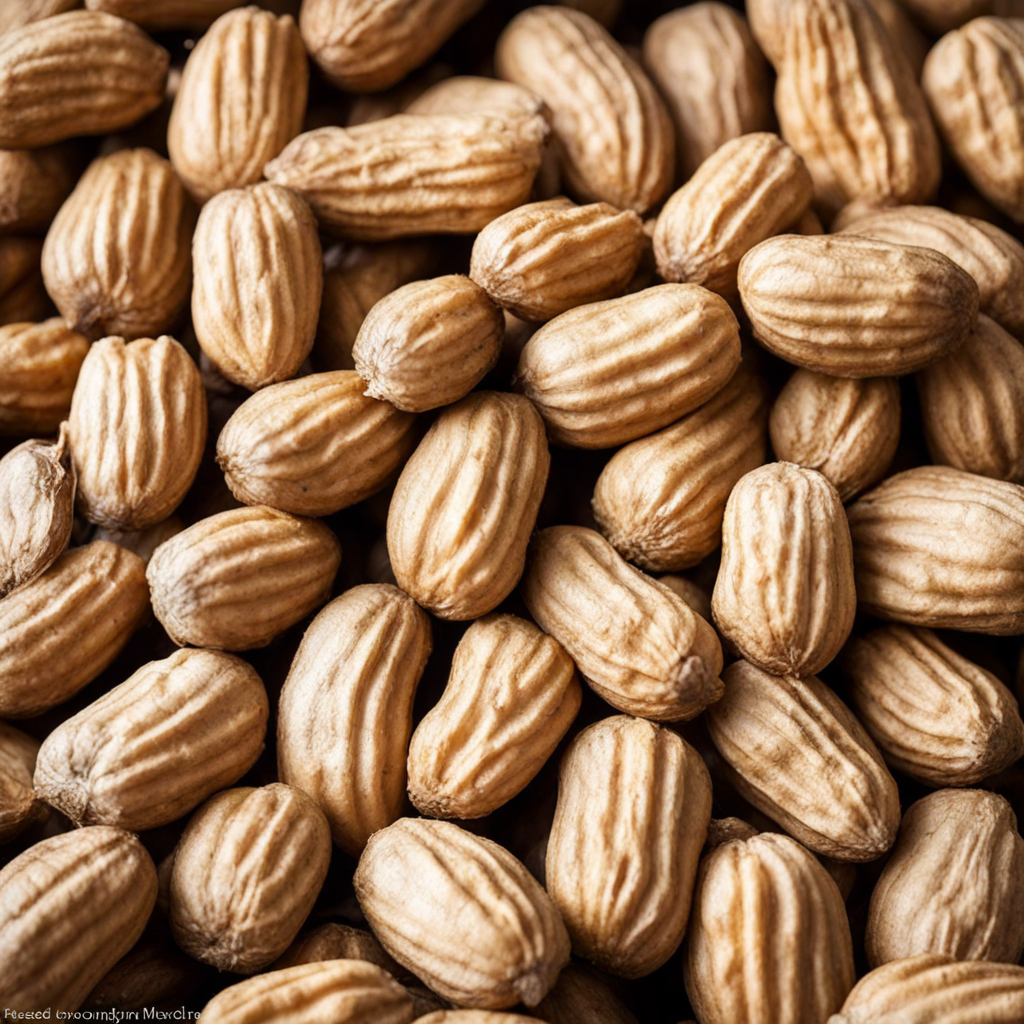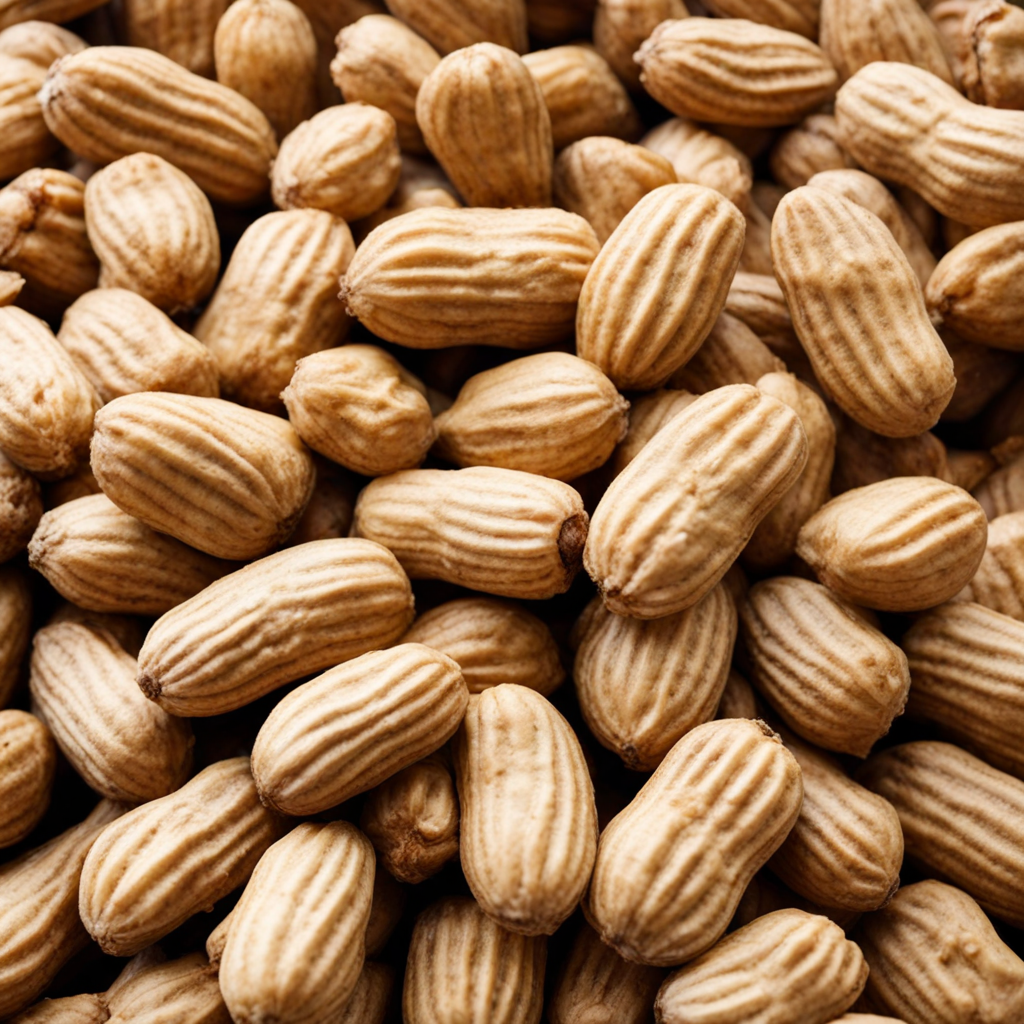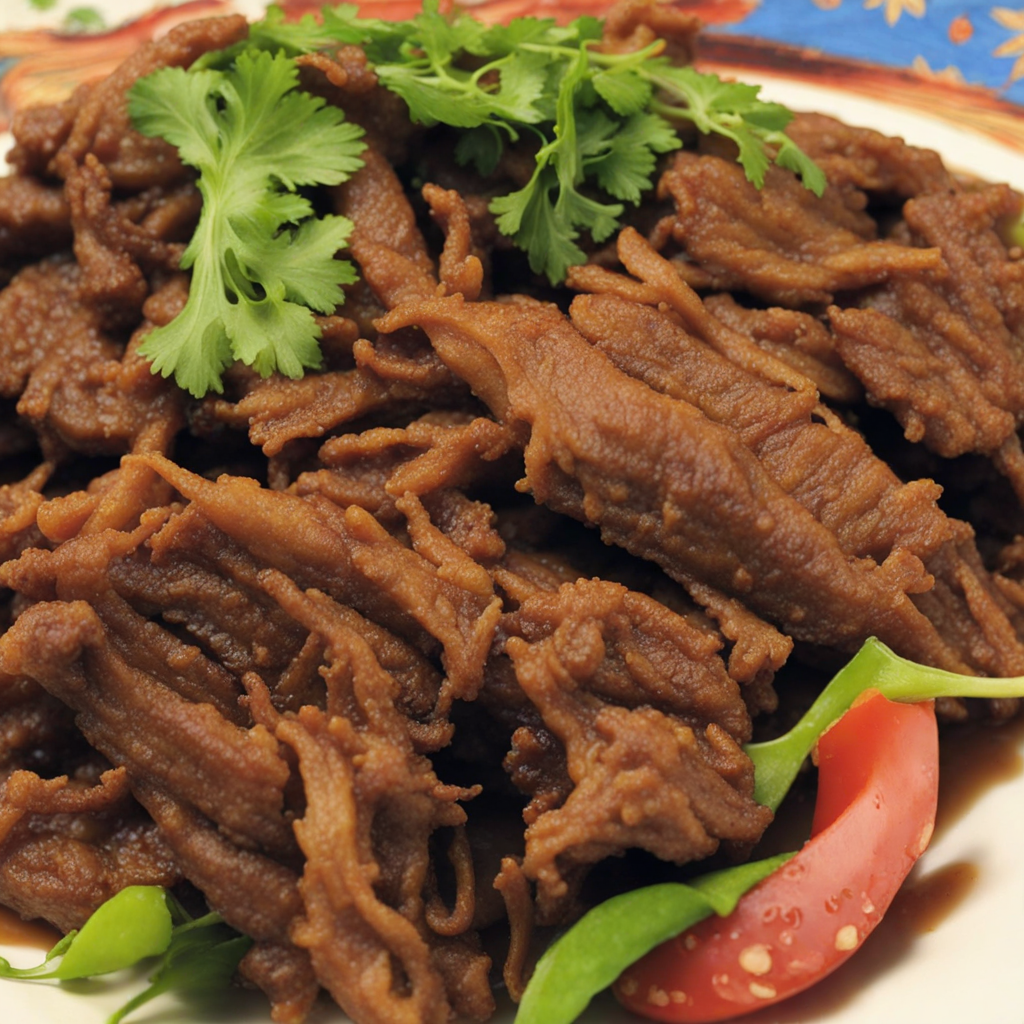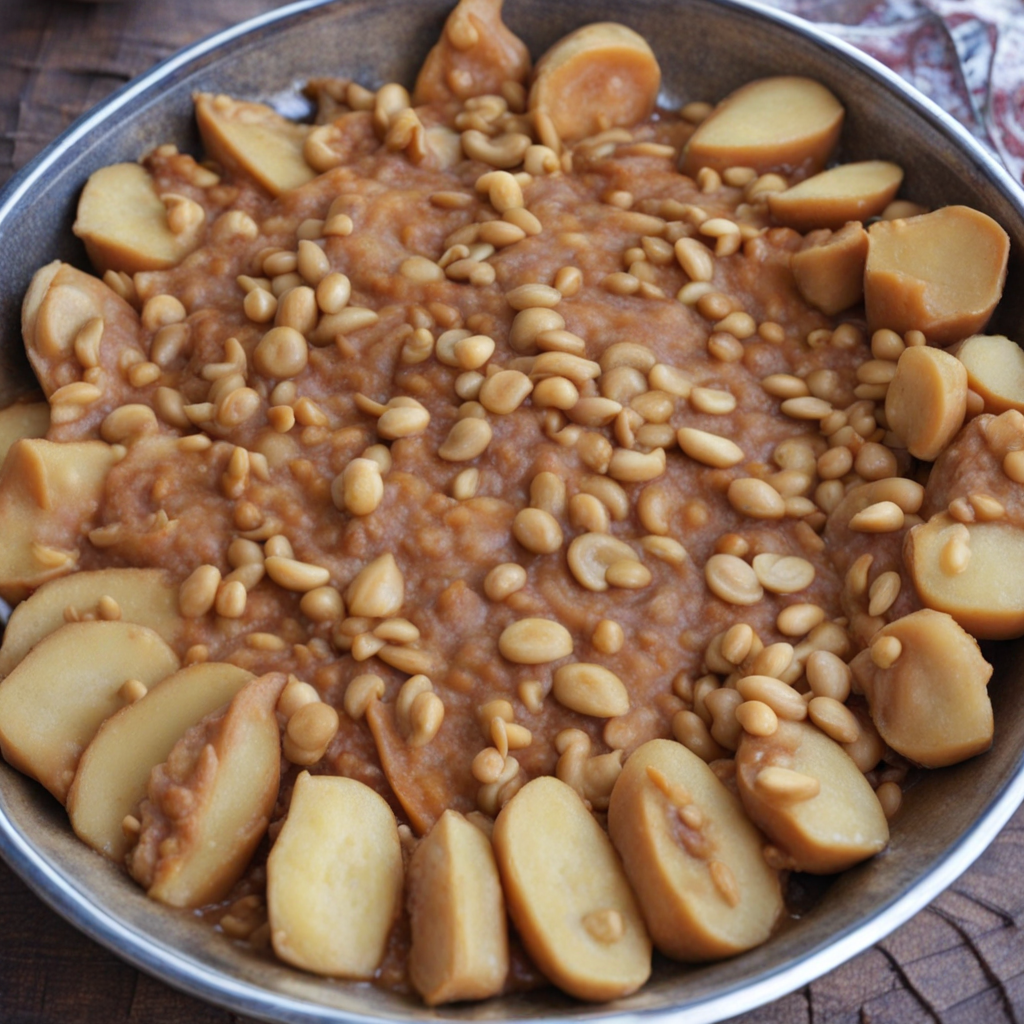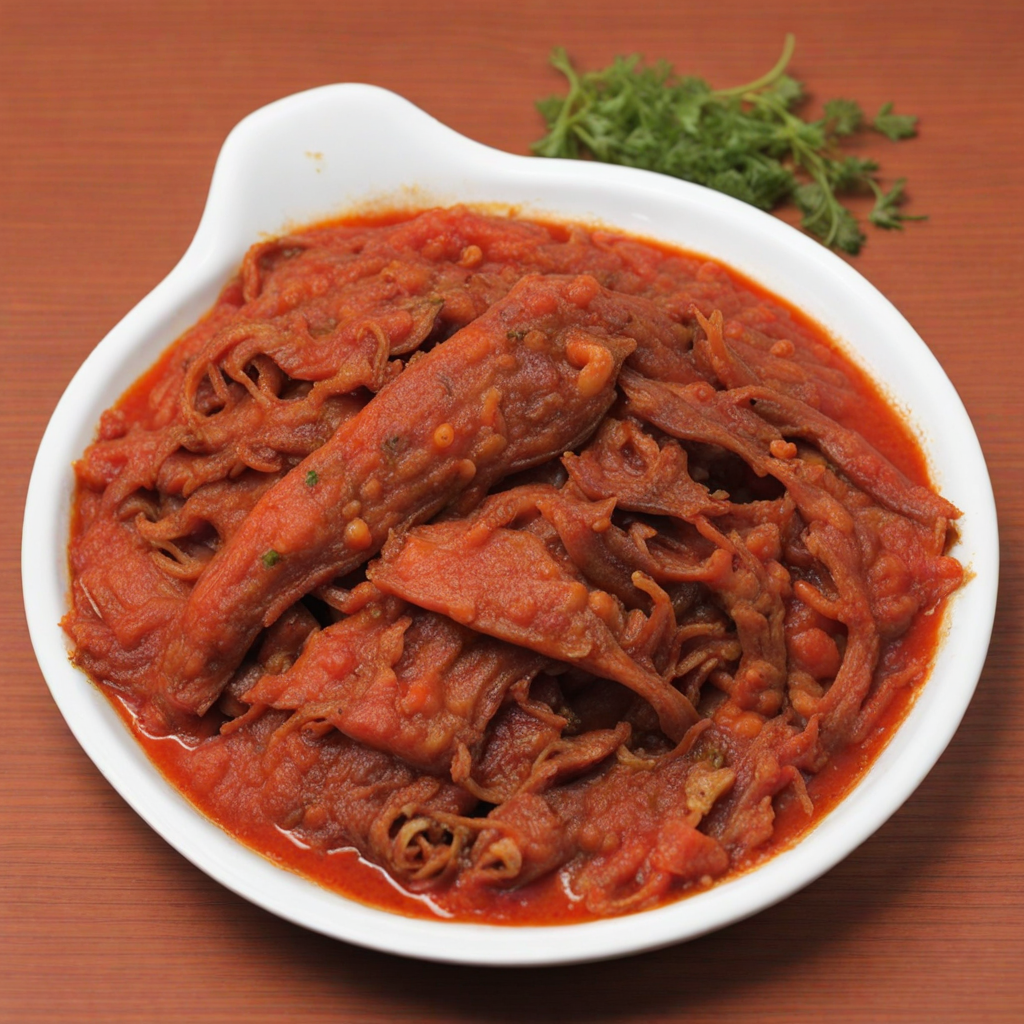Mtedza
Mtedza is a delightful dish from Malawi, celebrated for its unique flavor and nutritional value. Made primarily from groundnut flour, which is derived from roasted peanuts, Mtedza offers a rich, nutty taste that is both comforting and satisfying. The flour is typically mixed with water to create a thick paste, which is then cooked until it achieves a smooth, creamy consistency. The simplicity of the ingredients allows the natural flavors to shine, making it a staple in many Malawian households. Often enjoyed as a side dish, Mtedza pairs beautifully with various traditional Malawian dishes such as nsima, a maize porridge, or as a complement to vegetable stews and grilled meats. The dish can also be flavored with spices, herbs, or even a touch of salt to enhance its taste profile. Its versatility allows for creativity in preparation, adapting it to suit different palates or dietary preferences. In addition to its delicious flavor, Mtedza is packed with nutrients, providing a good source of protein, healthy fats, and essential vitamins. This makes it not only a satisfying meal but also a nourishing one. Whether enjoyed at a family gathering or as a comforting meal at home, Mtedza embodies the heart of Malawian cuisine, inviting those who try it to experience the warmth and richness of the country's culinary traditions.
How It Became This Dish
The History of Mtedza: A Culinary Treasure of Malawi #### Origins Mtedza, also known as groundnut or peanut, has deep cultural and agricultural roots in Malawi, a landlocked country in southeastern Africa. While the exact origins of the peanut (Arachis hypogaea) can be traced back to South America, it was introduced to Africa by Portuguese traders in the 16th century. Over time, it became integrated into the local agricultural practices and culinary traditions of various African regions, including Malawi. In Malawi, Mtedza is more than just a food item; it represents a vital source of nutrition and income for many families. The crop thrives in the country's warm climate and is typically cultivated in sandy, well-drained soils. As a legume, peanuts enrich the soil with nitrogen, making them an ideal rotational crop alongside staples like maize and cassava. This agricultural practice has sustained local farming communities for generations, underscoring the importance of Mtedza in the Malawian economy. #### Cultural Significance Mtedza holds a prominent place in the culinary landscape of Malawi and is intertwined with the social and cultural fabric of its people. Traditionally, peanuts are roasted and ground into a paste, which is then used in various dishes, including stews, sauces, and snacks. The rich, nutty flavor of Mtedza complements many local ingredients, such as vegetables, fish, and meats, enhancing their taste and nutritional value. Peanuts are also a staple in celebrations and ceremonies. During significant events such as weddings, harvest festivals, and religious gatherings, Mtedza is often featured in special dishes, symbolizing abundance and prosperity. The act of sharing peanut-based meals brings communities together, fostering social bonds and reinforcing cultural identity. Additionally, in some Malawian communities, peanuts are used in traditional medicine, believed to possess healing properties that benefit overall health. #### Development Over Time As Malawi transitioned through various historical periods, the cultivation and consumption of Mtedza evolved in response to changing agricultural practices, economic conditions, and globalization. In the pre-colonial period, peanuts were primarily grown for subsistence, with local communities relying on the crop to sustain their diets and support their livelihoods. The colonial era brought significant changes to Malawi's agricultural landscape. The British colonial government encouraged the commercial production of cash crops, including Mtedza, which began to be exported to markets abroad. This shift not only altered farming practices but also impacted local diets and food sovereignty. While the economic benefits of peanut exports were evident, they often came at the cost of local food security, as farmers prioritized cash crops over subsistence agriculture. In the late 20th century, Malawi faced numerous challenges, including political instability, economic downturns, and natural disasters such as droughts and floods. These factors led to food insecurity and a decline in agricultural productivity. In response, various NGOs and governmental organizations initiated programs designed to promote sustainable farming practices and improve food security. Mtedza, with its resilience in adverse conditions and its high nutritional value, became a focal point for these initiatives. #### Modern-Day Mtedza Today, Mtedza is recognized not only as a vital part of the Malawian diet but also as a key player in the country's economy. The rise of smallholder farmers and cooperatives has enabled the production of peanuts to flourish, providing livelihoods for many families. Mtedza is harvested and processed into various products, including peanut butter, oil, and snacks, which are marketed both locally and internationally. The global trend toward plant-based diets has further increased the demand for peanuts, as they are rich in protein, healthy fats, and essential nutrients. This has led to a renewed interest in Mtedza, encouraging innovation in its culinary applications. Contemporary chefs and home cooks alike are experimenting with traditional recipes, incorporating Mtedza into modern dishes that appeal to both local and international palates. In addition to its culinary versatility, Mtedza is gaining recognition for its nutritional benefits. Research has highlighted the role of peanuts in combating malnutrition, particularly among children. As a source of protein and healthy fats, Mtedza helps address dietary deficiencies, making it a vital component of food assistance programs aimed at improving community health. #### Mtedza in the Global Context As globalization continues to reshape culinary landscapes, Mtedza is finding its place beyond the borders of Malawi. The peanut's adaptability allows it to be utilized in diverse cuisines worldwide, from Asian satays to American peanut butter. Furthermore, Malawian diaspora communities are instrumental in promoting Mtedza abroad, sharing their culinary heritage and introducing traditional dishes to new audiences. With the rise of social media and food blogs, Mtedza is increasingly featured in recipes that highlight its rich flavor and cultural significance. Food enthusiasts are drawn to the uniqueness of Malawian cuisine, and Mtedza serves as a delicious entry point for those eager to explore the diverse world of African food. #### Conclusion Mtedza is more than just a food item; it is a symbol of resilience, community, and cultural heritage in Malawi. Its journey from a subsistence crop to a significant player in the global food market reflects the dynamic interplay of tradition and modernity. As Malawi continues to navigate the challenges of the 21st century, the story of Mtedza reminds us of the importance of preserving culinary traditions while embracing innovation. The legacy of Mtedza is not only a testament to the ingenuity of Malawian farmers but also a celebration of the rich tapestry of flavors that define this vibrant culture.
You may like
Discover local flavors from Malawi


